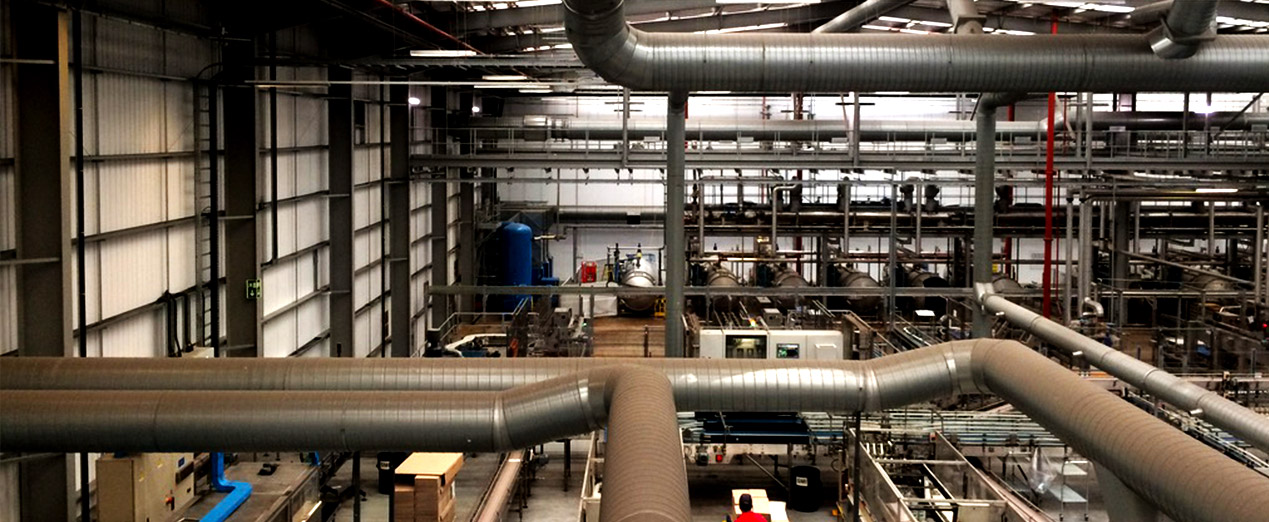
Use of air audits in factory cooling and ventilation
This is a journey into the food sector examining the auditing of air ventilation and cooling systems. Whatever has happened in the past, a new or converted factory will experience any number of cooling and ventilation upgrades over a lifetime; this may be for reasons such as machinery upgrades, changes in technology, market demands, new product innovation, even a surge in popularity for new food sensation. Factories must still be compliant but fundamentally, food safe. For cooling and ventilation purposes they may add mechanical cooling to ventilation or deploy a combination of both. Stepping up from a Low Care to High Care or High-Risk operation amongst a myriad of other production changes will then require an air overpressure, or positive air pressure, to the new facility.
When it comes to options for air delivery there are in reality three key alternatives to choose from, the third being for specialist processes, specifically to serve the ultra-clean air flows to aid and protect product shelf life. Some examples of this include the soft drinks industry, the Tango filling lines, soy and speciality milks, baby rusks and individual long shelf-life desserts, all protected on filling ultra-clean air. This technique is known as the air ‘piston’ system and is designed to push air downwards above the filling process to press out airborne contaminates, driving them away from the critical area. Costly for the volume of air required and for the air filtration components, a new high care buffer zone with air temperature management is a must.
The other two air systems are known and categorised as ‘air mixing’ or ‘air displacement’ systems. Whichever is specified the ventilation must spread into all the corners of the process rooms, right up to the roof level which may be eight to ten meters above. This is a challenge and one for designers to achieve to ensure the air in the room, dilutes and mixes contaminants with clean, filtered air removing all away from the processing space by extraction through a wall or ceiling aperture or duct. This ‘Mixing’ is the most widely used and generally effective at temperature control but needy of energy.
The air displacement option is ideally suited to ventilating and cooling large, taller buildings. Focusing on the lower two meters of the building or room, this is where both workforce and the key processes are located. Air is pushed into the space through air terminals located at strategic intervals around the room. Terminals vary in size according to airflow and are fixed just above the floor to deliver air only a few degrees below the room temperature. This is the ‘occupied zone’ of clean air. Using a lower amount of energy in comparison with mixing systems, displacement removes contaminants and heat in the air upwards by simply increasing air buoyancy. The air is then removed from the space at high level together with any airborne contaminates together with the heated air stream.
FSL records the volumetric airflow rate of all the air both entering and leaving these at a number of factories, whether it a be a mixing, displacement or piston air process, at a number of UK sites. By measuring each production compartment (Processing, packaging etc.) we are able to advise on the air flows throughout the factory (they may be neutral, positive or negative). There are often over one hundred points to record. The objective is an overall neutral or positive airflow along the various compartments. Packaging should operate within a positive air pressure compared with processing, which could be slightly negative, this improves the containment of heat and aerosols, preventing migration to other compartments. FSL has shown that with regular measurement and reporting, airflow in food industry applications can be compliant in all respects. Importantly, energy issues may be resolved (heat exchanger advice) and filter options reviewed. Specific issues to improve comfort for the workforce is always on the agenda.
